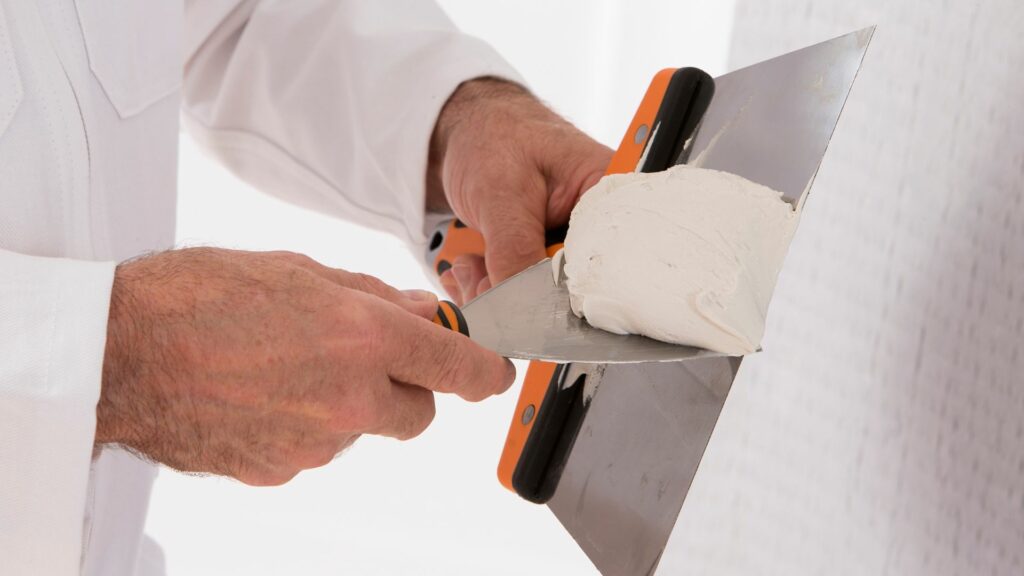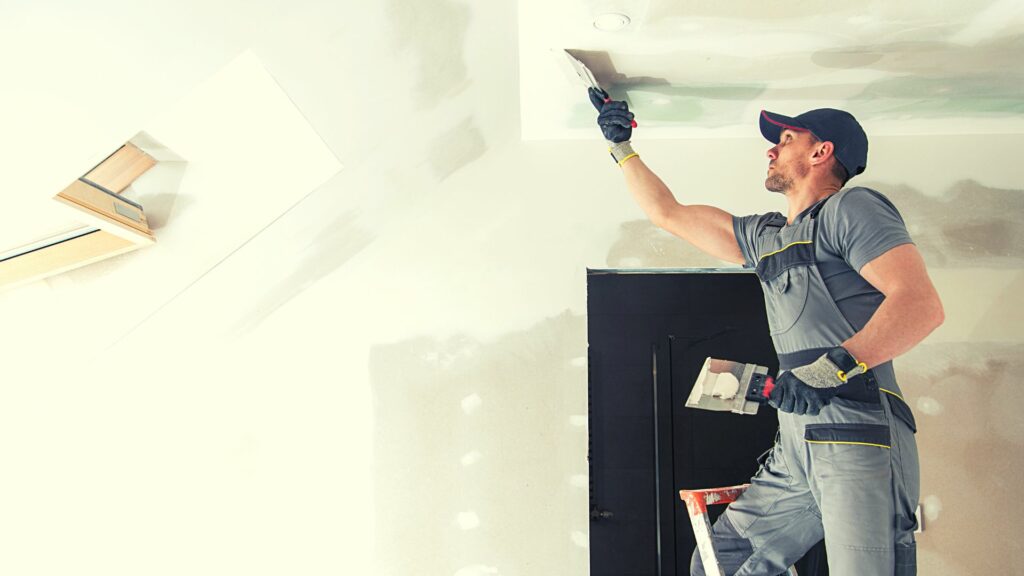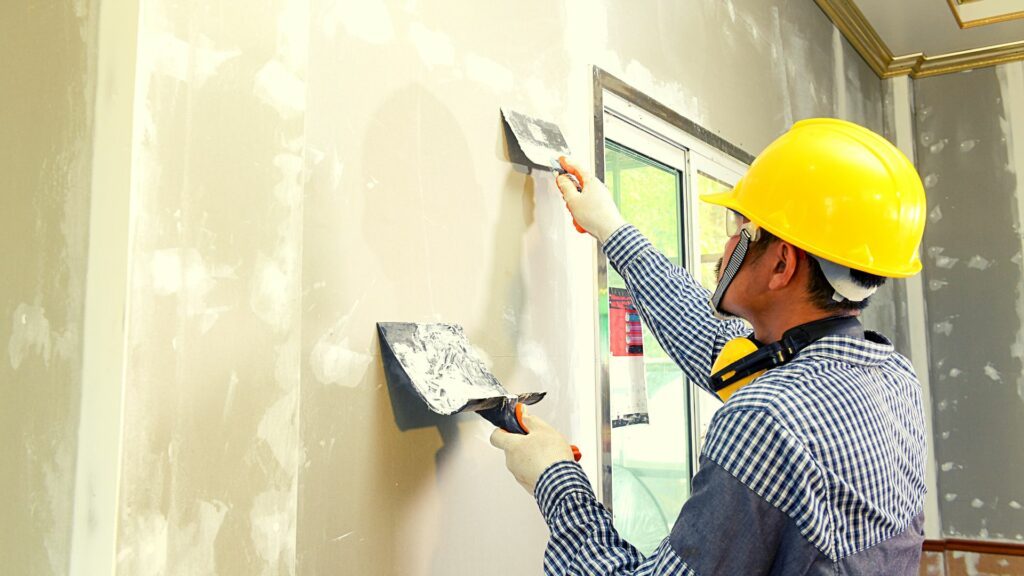Most people have a pretty good idea of what types of countertops they want in their home and which light fixtures they prefer over others. However, most people have difficulty choosing the material they want for their interior walls.
It is easy to overlook interior walls in a house, but walls are just as crucial as the granite countertops and the marble flooring, if not more. Interior walls are a vital part of any house because they separate spaces and create privacy. Furthermore, walls act as insulators and sound barriers.
Drywall has gained much popularity in the recent past if the countless DIY YouTube videos are anything to go by. However, others may argue that plaster is better. Plaster is standard in homes built before World War II (for a good reason), while newer homes tend to spot drywall.
This article will compare the uses of plaster and drywall in construction and their pros and cons.
Table of Contents
What is plaster?
Plaster is a paste made from cement, sand, water, and minerals. It is used as a coating to either protect or decorate walls. This paste is applied in layers onto narrow strips of wood or metal known as laths and allowed to dry after application.
The use of plaster can be traced back to 7500 BC, when lime-based plaster was used in buildings in Jordan. People in ancient India and China also practiced plastering. The early Indians and Chinese used a mixture of clay and gypsum to plaster over stone or brick walls, creating a smoother surface.
Gypsum and water eventually gained popularity across Europe, and this type of plaster became typical of the Middle Ages. By the 1940s, however, people began to use drywall, and plaster gradually lost its popularity.
Traditionally, plastering was done by covering the framing studs with thin strips of wood nailed to the studs horizontally. These narrow strips of wood are called wood lath. The gaps between the strips of wood are then covered by the first coat of plaster, followed by two or three more layers of plaster for a smooth finish.
In modern construction, wood lath has been replaced by a metal mesh. The procedure, however, remains the same. Plastering is done just like stucco is applied to exterior walls.

Pros of plaster
- Soundproof: Plaster has a high density, making it more soundproof than drywall. Research conducted by the National Gypsum found that an almost 1″ thick lath and plaster wall has a Sound Transmission Class (STC) rating of 52, while 1/2″ drywall on 2×4 wood studs has a rating of only 34. STC is used to measure the material’s soundproofing qualities.
- Energy-efficient: The thickness of plaster walls makes them more energy efficient because they provide better temperature control and insulation.
- Durable: Plaster is more durable than drywall because of its thickness. This makes plaster an ideal choice when building for the long term. Plaster also has higher tensile strength and helps make structures more stable, unlike drywall.
- Sophisticated finish: One can use plaster to achieve a sophisticated look because it can deliver textured, glossy or smooth finishes. The rough texture is characteristic of historic homes, and one cannot replicate it using drywall.
- Flexible: It is ideal for difficult areas to drywall, such as curved walls.
- Fire-resistant: Plaster is less likely to catch fire, mainly when used with metal lath.
- Mold-resistant: Plaster is mold resistant.
Cons of plaster
- Costly: Plaster is more expensive to apply and maintain.
- Time-consuming: The application time of plaster is longer.
- Complicated application process: Plaster requires extra effort and expertise to work with.
- More likely to crack: Plaster cracks faster than drywall after settling due to its brittle nature.
- Difficult to repair: Making repairs or upgrades on plaster is difficult because it is harder to cut into.
What is drywall?
Drywall is made by pressing gypsum plaster between two layers of heavy paper and is sometimes referred to as gypsum board, sheetrock, wallboard, or cement board. There are two kinds of drywall: drywall panels and joint compound. The main ingredient in drywall panels is calcium sulfate dihydrate, also known as gypsum.
Drywall panels became popular in the mid-20th century as a more accessible and cheaper alternative to plaster and have remained popular in modern construction. They are standard in cold areas because the spaces behind the panels can accommodate insulation.
Drywall panels can be cut to any size to leave space for windows, doors, and electrical outlets. They are secured to the structure using specialized drywall fasteners or nails and screws. One then covers any exposed parts with tape and pliable drywall compound. Once the rubbery wall compound is dry, one can paint the drywall for a cleaner finish.
In newer home construction projects, standard drywall panels cover insulation. Some brands of drywall may include certain additives to improve functionality and meet specific building codes.
An example is a green board manufactured to be more water and mold resistant than gypsum drywall. There are also a few soundproof options in the market.

Pros of drywall
- It is excellent for thermal insulation. The gaps between the panels provide space that can hide fiberglass insulation.
- It is cheaper to install than plaster.
- Drywall takes less time to install.
- Installing drywall requires less expertise, making it a better option for DIY projects.
- Well-finished drywall is dead smooth, and one can add texture if one wishes to.
- It is easy to make wall repairs or fix holes in drywall.
- It is much easier to hang shelving frames and wall paintings on a drywall than on plaster.
- It provides sound insulation.
- There are a variety of sizes and types to choose from
Cons of drywall
- Transporting and storing drywall may be complicated because of its delicate nature. Drywall must be stored in a dry place.
- Drywall panels are heavy and may require special equipment to lift and position.
- Drywall provides little to no support to the structure.
- It is less fire-resistant and mold-resistant than plaster.
Summary
Interior walls are a vital part of any construction, but people often overlook them. Plaster and drywall are the main walls covering materials in construction. Each of these materials has its benefits, and the choice ultimately comes down to look and cost.
Drywall is cheaper and easier to install, but plaster is superior in look and feel. Additionally, plaster provides more support than drywall because of its density.
On the other hand, drywall is more energy-efficient and allows for in-wall repairs. It is essential to consider various factors before settling on either drywall or plaster for your interior walls.
FAQs
Below are the answers to the frequently asked questions on plaster vs. drywall.
Is it better to use plaster or drywall?
Both plaster and drywall work great in specific conditions. It is essential to consider several factors before choosing an option. Drywall is an excellent option for short-term, low-cost projects, while the plaster is ideal for long-term projects.
Can I replace plaster with drywall?
Drywall and plaster serve the same purpose, but they may not always work well in the exact scenarios. For example, drywall is better in cold climates because of its energy efficiency.

